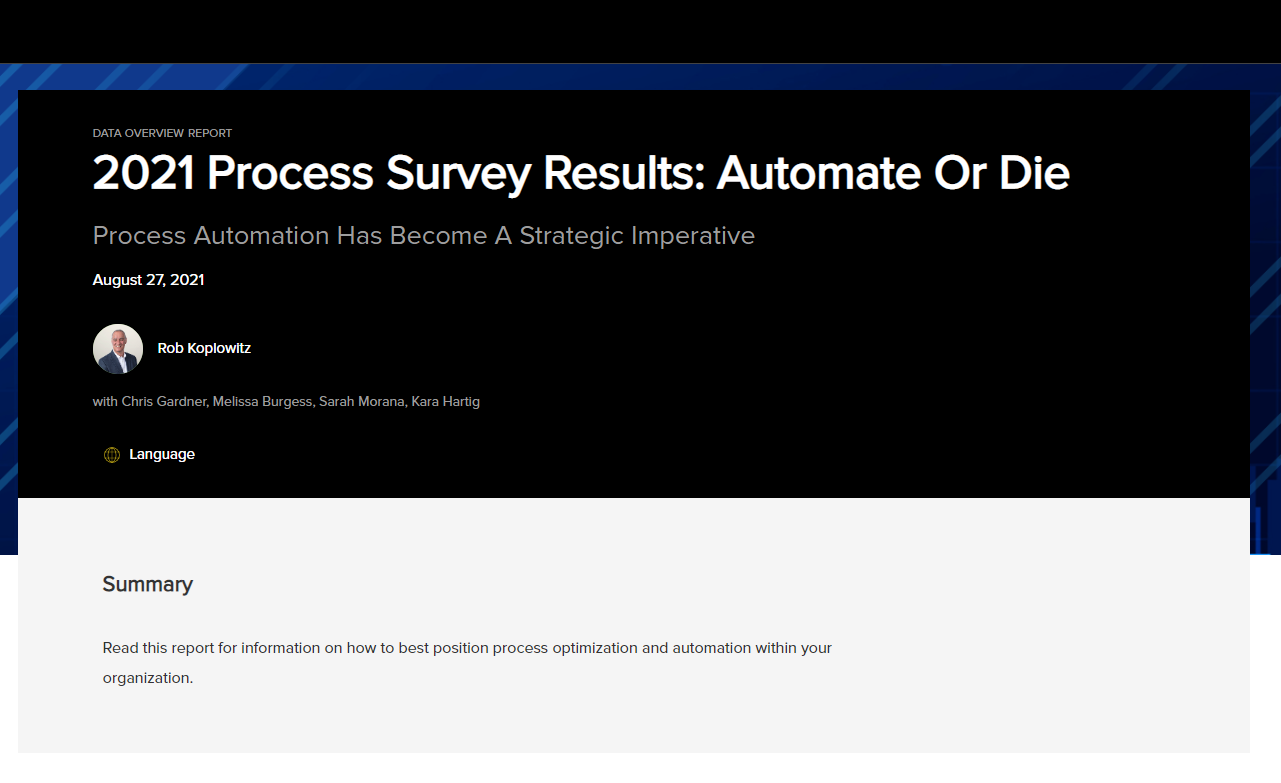BPM emerges as key downturn tech
The recession has handed technologies like BPM and SOA the perfect opportunity to prove their worth.


And the survey also identified cost savings (cited by 25 per cent) and improved operational efficiencies (22 per cent) as the two most valuable benefits that BPM solutions were perceived to deliver in resisting financial pressures. However, external facing benefits continued to be nearly as important, with better customer service (19 per cent) and improved responsiveness to customer needs (17 per cent) scoring highly.
Innovation, too?
Mike Lees, BPM business senior director for Software AG, told IT PRO renewed interest in BPM and its technology relatives stemmed from the growing realisation that simply employing programmers to write applications in the latest programming language invariably results in systems that become the organisation's "new legacy," and which also become inflexible and costly to maintain.
"For example, one UK government department I know spends tens of thousands of pounds every year making simple changes - for example, the rate at which a subsidy is paid at - to their applications," he said. "Whereas a reasonable BPM implementation would be able to adopt such changes immediately, through a simple change to a business rule."
Lees said IT has traditionally been seen as a roadblock when it comes to process improvement and rapid business change. "This is where BPM changes the game and why it is now coming to the fore," he continued. "And, especially with significant increases and changes in regulation around the corner, businesses are investing in operational transparency solutions such as business activity monitoring (BAM)."
Like Malinverno, Lees urged organisations to invest in the infrastructure as well as the tools: "All this innovation needs to be implemented rapidly. This can only happen if the IT department has an infrastructure that facilitates reuse and rapid, iterative composition of new capabilities," he said.
"BPM and SOA go hand-in-hand. The business cannot be empowered to move with greater process agility if IT is still stuck maintaining functional applications."
Sign up today and you will receive a free copy of our Future Focus 2025 report - the leading guidance on AI, cybersecurity and other IT challenges as per 700+ senior executives
Aviva, the world's fifth-largest insurance group, recently joined the growing group organisations as diverse as Carphone Warehouse and CERN in taking on AIM technologies to support complex, strategic process improvement.
Toby Redshaw, Aviva chief information officer, said: "I consider modern BPM to be one of a handful of breakthrough technologies that can have real short-term P&L [profit and loss] impact."
Aviva has signed a strategic agreement to use Lombardi Blueprint, a software-as-a-service (SaaS) process documentation and collaboration tool, and Lombardi Teamworks, the BPM Suite from vendor, Lombardi Software for designing, executing, and improving business processes across Europe, Asia-Pacific and North America.
Redshaw summed up: "We have found that appropriately deploying this technology enables us to deliver solutions faster, better and cheaper. Faster because of the iterative nature of BPM and with Blueprint/Teamworks strength in process visualisation this is extremely powerful. Better because, with process orchestration, we increase the consistency of processes more process activity is completed first time and without error. Cheaper because of the productivity benefits we gain and the ease of integrating into our current estate."
A 25-year veteran enterprise technology expert, Miya Knights applies her deep understanding of technology gained through her journalism career to both her role as a consultant and as director at Retail Technology Magazine, which she helped shape over the past 17 years. Miya was educated at Oxford University, earning a master’s degree in English.
Her role as a journalist has seen her write for many of the leading technology publishers in the UK such as ITPro, TechWeekEurope, CIO UK, Computer Weekly, and also a number of national newspapers including The Times, Independent, and Financial Times.
-
 The trends we're watching in 2026
The trends we're watching in 2026ITPro Podcast AI agents, worsening cyber attacks, and supercomputer expansion could define the coming year
-
 2025 marked the beginning of the end for OpenAI
2025 marked the beginning of the end for OpenAIOpinion OpenAI has its fingers in too many pies and it’s rapidly losing favor with consumers and enterprises alike
-
 Forrester Report: Automate or die
Forrester Report: Automate or dieWhitepaper Process automation has become a strategic imperative
-
 Going paperless in 90 days
Going paperless in 90 daysWhitepaper The three steps to quick and effective digitisation
-
 Microsoft acquires process automation specialist Mint
Microsoft acquires process automation specialist MintNews It marks yet another move for Microsoft into a market expected to be worth around $11 billion by 2030
-
 Podcast transcript: How to automate your business
Podcast transcript: How to automate your businessIT Pro Podcast Read the full transcript for this episode of the IT Pro Podcast
-
 The IT Pro Podcast: How to automate your business
The IT Pro Podcast: How to automate your businessIT Pro Podcast We learn how Glasgow Credit Union ditched paper processes with the help of software automation
-
 Cisco defies market shift to cloud with rising hardware sales
Cisco defies market shift to cloud with rising hardware salesNews Software and security bets also pay off as revenues exceed analyst expectations
-
 Turn knowledge into power
Turn knowledge into powerNews Maximise the value of BPM in your organisation with this special report.
-
 Process optimisation faces skills challenges
Process optimisation faces skills challengesNews Gartner says organisations lack the entire complement of skills needed to run BPM projects.
